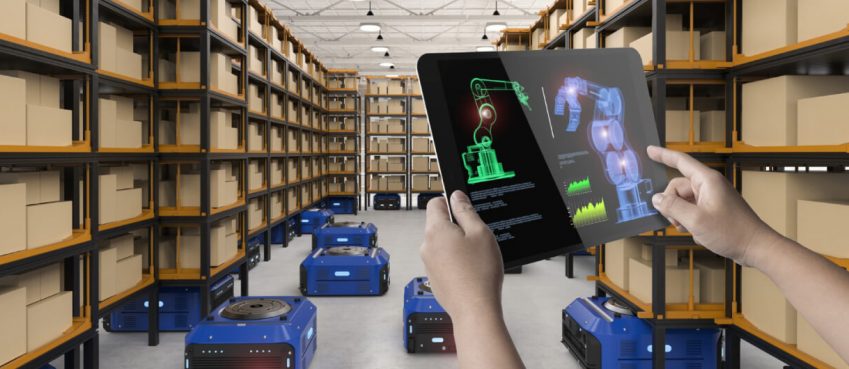
Businesses can leverage digital transformation to improve efficiency, quality, consistency, and customer service in order to gain a competitive advantage in today’s global market. It also guarantees that the supply chains will be more flexible and can adopt more efficient business models.
It is clear that manual and paper-based processes are possible to be automated by converting digital to analog forms. Over the next five to ten years, the supply chain will experience a major transformation. Today’s supply chain is characterized by marketing, product development, and distribution. Customer service and customer service are all separate.
Role of Digital Transformation Companies
Many digital transformation companies are changing the world today, breaking down barriers and creating a fully integrated ecosystem that is accessible to everyone. This ecosystem, along with several other digital technologies, will include supply chain management, analytics, and robots.
The rapid digitization and expansion of supply chains will also increase efficiency in the development of new economic models. Although it can seem complicated to offer digital transformation services in supply-chain management, this article will help you understand everything. Let’s get started! Let’s get started!
Also read: What Is Cognition’s New AI-Software “Devin AI” All About? (Complete Guide)Digital Supply Chain
A supply chain is a collection of people, businesses, and resources that works together to create and sell products. It includes the supplier who supplies the raw materials, the manufacturer and the buyer who purchases the product. When documents and invoices are shared between two parties, Supply Chain Management can digitalize them.
There are many tools available to help digitize the supply chain. The primary goal of digitizing the supply chain is to increase productivity and profitability. Digital supply chain transformation allows companies to move people, resources, and assets wherever they are needed at any given time. It also reduces costs by anticipating and responding quickly to manufacturing and transportation risks.
What Role does Digital Transformation Play in Supply Chain Management?
These are the essential digital transformation roles for supply chain management:
1. Enable A Demand-Driven Supply Chain
Digital systems enable demand-driven supply chain management. Many digital transformation companies can use digital technology’s real-time sales data to improve the supply chain in order to meet specific customer demands. This allows them to increase the production of high-selling products while reducing costs for those that are less profitable.
2. Be More Proactive in Your Approach
One of the greatest advantages of this company is its ability to look ahead and take steps to move forward. The company’s performance and efficiency can be improved if it doesn’t focus on the past.
Also read: Blocked On Snapchat: Figure Out What-To-Do, The Fixes, and FAQs3. Reduce Stockouts and Markdowns
Companies must optimize lead times and respond to customer demand in order to offer the best product mix. Price reductions can cause sales losses and reduce profits dollar-for-dollar.
4. Data Visualization
As you are likely aware, every day a huge amount of data is made available. Many companies are unable to effectively manage and organize all this data. Data visualization makes it easy to see the various departments within your company. This data can help you identify areas that require improvement and make your company more efficient.
5. Increase Cash Flow and Cost Management
Digitizing your supply chain management processes can have the crucial benefit of reducing capital investment as the supply chain moves faster.
6. Steadily Increase Client Satisfaction
The primary goal of a company is to make sure that its clients are happy with the services or products they receive. A digital supply chain will allow you to better serve your customers. You can make supply chain changes more quickly, which will mean that your customers will be happier as you deliver what they need and want faster.
Digital Supply Chain Management Trends
Supply Chain Management utilizes sensors, robotics, and big data technologies. This technology is used by the entire chain to attract consumers through automated processes. It speeds up the process and allows for greater adaptability of the supply chain.
These are the top trends in fashion:
1. Technologies for The Internet of Things (IoT)
The “Internet of Things” is a term for things that are connected to the internet. IoT technologies are also known. The Internet of Things (IoT), allows you to track and identify products in stores and warehouses, monitor delivery performance, and regulate and measure temperature and relative humidity. RFID (radio frequency identification) and GPS(global positioning system), are two examples of technologies that can be used to analyze and monitor inventory, cargo, vehicles, and vehicles.
2. Blockchain
The term “blockchain”, which has been associated with cryptocurrencies like bitcoin, has been used for the past few decades. It’s an efficient tool for securely transmitting paper and digital documents such as ledgers and collective bargaining agreements. Documents related to freight can be generated at every stage of the supply chain. Each transaction is recorded as a separate block. This allows for a complete history of transactions to be traced back at a single time point.
Also read: Best 10 Email Marketing Tools in 20213. Robotics
Robotics is used in logistics and retail to speed up the delivery of goods. They are also known as inventory robots. They can usually take inventory off the shelf and repackage it or move it around. Drones and driverless cars can deliver packages. Customer service robots can also be found in stores to help customers and answer their questions.
4. Cloud Framework
As various economic sectors adopt more efficient solutions, cloud computing will see a rise in expenditures. Supply chain management uses cloud-based systems and infrastructures to provide solutions for supply chains. Cloud-based storage, analysis, and inventory tracking are making supply chain management more efficient.
5. Advanced Analytics and Big Data
There are many valuable insights that can be gained throughout the supply chain. These include inventory planning, manufacturing, and sales. The majority of the time the information is used to make decisions. These include inventory control, sales forecasting, and operational optimization.
Conclusion
Digital transformation is a way for organizations to keep up with customer demand changes. It also improves their ability to compete in a changing economic environment. Any company, non-profit, or institution that wants to succeed in the future will need to undergo digital transformation. Businesses that refuse to embrace digital transformation will eventually be shut down.
The supply chain will continue to grow and develop, which will promote innovation, competition, and customer service. In a competitive marketplace, companies must continue to improve inventory management and asset allocation. As long as innovation continues, revenue will increase.
Top 10 News
-
01
Top 10 Deep Learning Multimodal Models & Their Uses
Tuesday August 12, 2025
-
02
10 Google AI Mode Facts That Every SEOs Should Know (And Wha...
Friday July 4, 2025
-
03
Top 10 visionOS 26 Features & Announcement (With Video)
Thursday June 12, 2025
-
04
Top 10 Veo 3 AI Video Generators in 2025 (Compared & Te...
Tuesday June 10, 2025
-
05
Top 10 AI GPUs That Can Increase Work Productivity By 30% (W...
Wednesday May 28, 2025
-
06
[10 BEST] AI Influencer Generator Apps Trending Right Now
Monday March 17, 2025
-
07
The 10 Best Companies Providing Electric Fencing For Busines...
Tuesday March 11, 2025
-
08
Top 10 Social Security Fairness Act Benefits In 2025
Wednesday March 5, 2025
-
09
Top 10 AI Infrastructure Companies In The World
Tuesday February 11, 2025
-
10
What Are Top 10 Blood Thinners To Minimize Heart Disease?
Wednesday January 22, 2025







